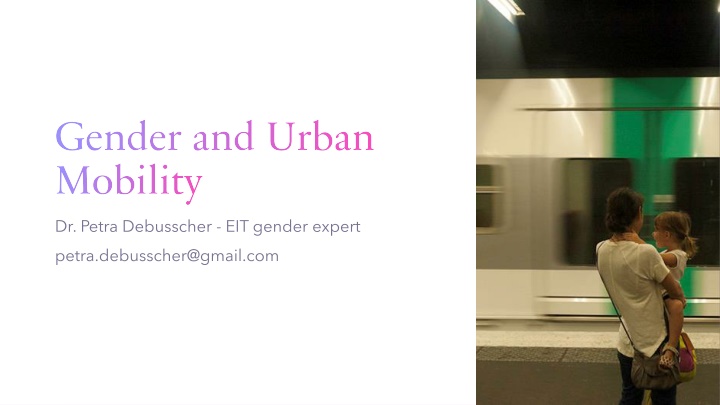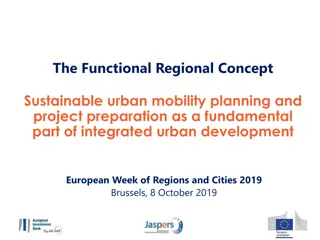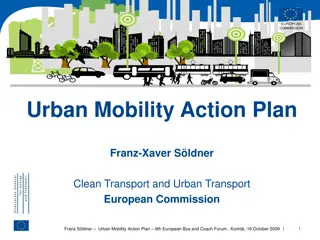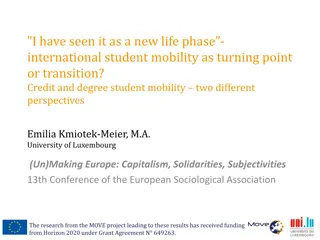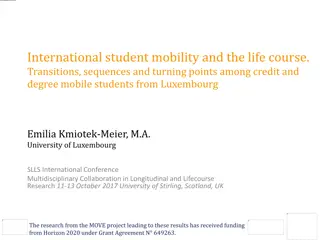Gender and Urban Mobility
Gender plays a crucial role in urban planning, innovation, and the way people move within cities. Disparities in public facilities, transportation options, and safety impact women's mobility and accessibility. Addressing these challenges requires gender-responsive urban design and transportation policies to create inclusive and safe environments for all individuals.
Download Presentation

Please find below an Image/Link to download the presentation.
The content on the website is provided AS IS for your information and personal use only. It may not be sold, licensed, or shared on other websites without obtaining consent from the author.If you encounter any issues during the download, it is possible that the publisher has removed the file from their server.
You are allowed to download the files provided on this website for personal or commercial use, subject to the condition that they are used lawfully. All files are the property of their respective owners.
The content on the website is provided AS IS for your information and personal use only. It may not be sold, licensed, or shared on other websites without obtaining consent from the author.
E N D
Presentation Transcript
Gender and Urban Mobility
Does gender play a role in urban planning and urban mobility? Women standing in line for the toilet at St Pancras Railway Station Amsterdam offers 35 public urinals for men compared with just three toilets designed for women
Does gender play a role in innovation and technology? Male and female dummy next to each other (left), differences between male and female build: red represents an average female and blue represents an average male (middle), female dummy model EvaRID (right). Source: ADSEAT EU funded project within the 7th framework programme Standard crash test dummy has a male build scaled-down male made to represent women
Does gender play a role in the way people move in a city and if so, how? Men and women still have different roles in society (although these are becoming more blurred) and this affects their travel patterns. Gender differences affecting travel pattern. Source: CIVITAS Policy Note (2014).
A normal day for a women in Western Europe. Source: CIVITAS Policy Note (2014).
Urban planning impacts safety, income and quality of life. Source: EIGE (2020).
Main issues for women with respect to mobility and accessibility Possible solutions Shattered destinations and travel times, frequent and short trips Investment in re-scheduling transport Walkability Encourage biking/bikeability Public space/social infrastructure nearby Frequent travelling with children, dependents and/or loads Spatial accessibility, avoid steps or kerbs, provide elevators and keep them functioning, ensure sufficient capacity of public transport, ensure density and frequency of the network Public space infrastructure (parks, playgrounds, benches, public toilets) Provide areas where children can be cared for (e.g. in railway stations, subways ) Affordable public transport Walkability Encourage biking/bikeability Less access to economic opportunities and a gender pay gap Harassment in public space, higher vulnerability to crime Urban design that allows visibility and social control Lighting Provide possibilities to call help Female staff Door-to-door services Awareness raising campaigns Table adapted from: Allen (2018). Approaches for gender responsive urban mobility. Published by GIZ
UM Innovations need to take gender into account if they want to be effective, user-friendly and sustainable Gender sensitive planning early on Include women in the design phase, as both experts and end-users Source: CIVITAS Policy Note (2014).
